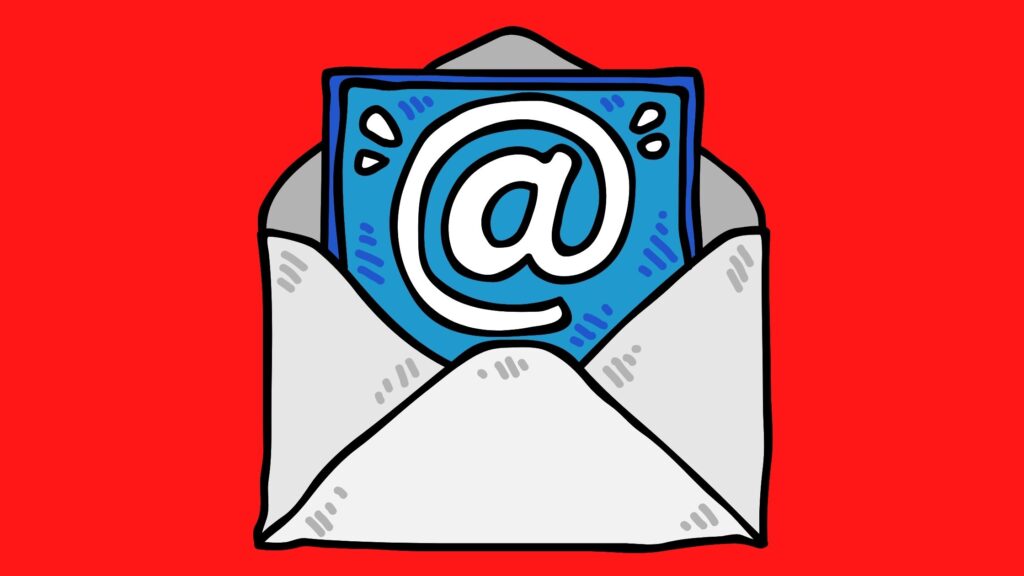
Warning Email Writing Techniques
Introduction
If you are a manager, the chances are you will have to write a warning email sometime in your career.
Imagine someone in the office is misbehaving. What do you do? How do you warn them?
Simple. Even though no one likes to write such emails, you send them an email.
Such communication is a message sent in an email to inform someone about their bad behavior. It is used when all other warning methods have failed and the person continues with the unwanted behaviors.
Writing such emails is usually not easy, but following certain guidelines can help in getting your point across without causing unnecessary offense.
The email should be short and to the point. It should never be more than one or two paragraphs or one to three short bullet points.
IMPORTANT: Do not copy or blind-copy your warning email to anyone else. Give the other party a chance to address the issue with you privately and change behavior in the desired direction.
Such messages are generally scathing in nature, so it is best not to get too emotional while writing it. Stick to facts without any embellishments.
Your communication should clearly state what the person has done wrong and what the consequences will be if they continue with the behavior.
It is also important to state what the warning is for. Is it a warning for future behavior, or is the person already in trouble for past behavior?
End the email on a positive note, thanking the person for their time and reiterating that you only want what’s best for them.
Some Dos and Don’ts
- Be concise
- State the warning in a factual manner
- Do not use emotional language while stating the warning, as it might further aggravate the situation.
- Do not get personal with the person and clearly state the consequences for future behavior in the email.
- State the consequences for future behavior
- End on a positive note. End on a positive note, reiterating that you only want what’s best for them. Thank them for their time and reiterate that you want them to succeed in the future.
IMPORTANT: Remember this is NOT an official warning, so it should be relatively friendly and professional.
When to Write a Warning Email
A warning is an important communication tool that can be used to prevent misunderstandings and potential conflicts from happening.
In general, you should send an email when there is a potential issue or problem that needs to be addressed.
Some common situations in which it may be necessary to send it include when someone:
- has failed to meet a particular standard
- has made an error in their work
- is taking too much credit for the efforts of others
- is consistently coming into the office late or leaving early, or not showing up at all.
It can also be useful to send similar emails if you are experiencing personal problems that might affect your work, such as:
- Health problems or other personal issues that may prevent you from working up to your usual standard
- Relationship problems which might mean that you are not concentrating on your work.
Your email should be sent in a sensitive and polite manner and should make it clear exactly what the problem is. The warning email should outline the consequences of not improving your work and remind the recipient that their current standards are unacceptable.
The text should also state what you expect to happen as a result of sending the warning email. For example, if you think it is necessary for an employee to attend training in order to improve their performance, say so in your warning email.
What to Include in a Warning Email
When writing that kind of email, there are a few key things that you should always include:
- The problem or issue that the recipient needs to address
- The consequences of not improving your work
- What you expect to happen as a result of sending the warning email
- A reminder of the standards that are expected
- The date by which you expect the problem to be resolved
- Your contact information in case the recipient has any questions.
Sending it can be an effective way of addressing a problem before it becomes too serious. By including the key information outlined above, you can make sure that your message is clear and easy to understand. If the recipient has any questions, they can easily contact you for more information.

How Long to Wait Before Writing
If you’re working in a team environment, it’s best to wait until there have been several warning notes before sending a warning email. This will give the recipient time to correct their behavior, and also show that you are not singling them out.
If the issue is serious enough, or continuing after multiple warning notes, then sending a warning email becomes the next step.
How To Structure a Warning Email
A warning email should be short, direct and to-the-point. Address it directly to the recipient, make your point clearly and concisely, without adding unnecessary fluff or explanation, and sign off with your name (not “Yours sincerely”). You can find a warning email template below.
How to Start
An opening line such as “It has been brought to my attention that you have been making inappropriate remarks in the office” will show the person why you are sending them an email, and also allow them to reply with any questions or clarifications they might have. You can find a warning email template below.
How to Finish
Make your point clearly and concisely, without adding unnecessary fluff or explanation. For example, saying “Please do not make sexually suggestive comments in the office” will be enough for most warning emails; there’s no need to elaborate on this point. You can find a warning email template below, at the end of this article.
Subject Line
To start with, you must be concise when writing the warning email’s subject line. Do not include more than six words in the subject line.
A warning email might only have the word “warning” in its subject line to show that it is a warning email.
How to Write a Warning Email Body
After preparing the warning email’s body, which should have an introduction and conclusion, use the warning email’s warning statement for the body.
You can place the warning statement at either the beginning or end of a warning email’s body.
Also
- include the steps that the recipient needs to take to prevent the situation from happening again,
- and state what will happen if the recipient does not follow your instructions.
Introduction
The introduction for a warning email should identify what the warning email is about. The introduction for a warning email should also state the reason why the warning email is being sent.
In some cases, the introduction for a warning email can identify who sent the warning email and when it was sent.
Conclusion
In the conclusion for a warning email, you should restate what you said in the warning email’s introduction. The conclusion for a warning email should also state what will happen if the warning email’s instructions are not followed.
Thank the recipient for their time in the conclusion of the email, as in:
“Thank you for taking the time to read this warning email. If you have any questions, please contact me at 555-555-5555.
Sincerely,
(Your Name)
(Title) “
Optional Ending for a Warning Email
“P.S. If you do not follow this email’s instructions, I will send this warning email to your manager and we will not be able to work together anymore.”

What To Do Next if There is No Response?
If you’ve sent the message and there’s been no response, the next step depends on the severity of the situation and your company’s policy.
You might need to escalate the warning to a manager or take other disciplinary action.
In some cases, you may need to contact HR or even the police.
IMPORTANT: Make sure you know your company’s warning email policies before doing anything after your email goes ignored. There is no one rule that applies to every organization but being prepared can go a long way toward steering clear of any major problems.
Other Tips for Writing a Warning Email
- Write it for someone breaking a policy or rule. Be specific and clear about the warning. If there is any room for confusion, always assume that the person reading it will have no idea what’s going on.
- In the event that there is no response, it’s important to know what your next steps should be. Depending on the severity of the situation and company policy, you may need to escalate the warning or take other disciplinary action. Always consult with HR or management before taking any further action.
- It’s crucial to remember that you should always be clear, concise, and to the point. Make sure the recipient cannot misconceive or be misconstrue your message.
- In serious situations, it is best to send the message as soon as possible after the warning signs have been observed. This will help to ensure that the recipient has an opportunity to correct their behavior before it becomes a bigger problem.
Who Should Write a Warning Email?
Anyone can send such an email. For example: who is concerned about the behavior of someone else, observed warning signs, or wants to protect an organization from being damaged in some way.
For example, a coworker can send it when they are worried about one’s mental health affecting work performance, or after experiencing threats on social media, or if they feel threatened by an individual on the job.
Design your communication to document warning signs and examples of inappropriate behavior that can negatively impact others. This includes threats and actions that put oneself at risk for serious consequences that could impact productivity, interpersonal relationships, or the safety of others.
Summary of Main Takeaway Points
- Stay factual and avoid making assumptions or judgments about the person’s behavior.
- List any possible consequences of the behavior if it continues.
- Send the warning email as soon as possible after you observe the warning signs.
- Be clear and concise.
- Make sure to include your contact information in case further clarification is needed.
- Keep a copy of the warning email for your records.
With these tips in mind, you can write an effective warning email.

Warning Email Templates:
Sample General Template (fill in the blanks)
Hi ____,
I’m writing to let you know about a problem I’ve been having with your work. ____, ____, ____. ____ is not meeting the usual standards that I expect from my employees.
The consequences of not improving your work can be serious and may include ____, ____, and/or ____.
I expect you to have resolved this problem by ____. If you have any questions or need help resolving the issue, please don’t hesitate to contact me.
Sincerely,
Your name
Phone number
P.S. If you have any questions or need help resolving the issue, please don’t hesitate to contact me.
Sexually Inappropriate Behavior
From: (your name and email)
Subject: warning email warning note about inappropriate remarks in the office
I have noted that you have been making inappropriate remarks in the office.
I would like to remind you of our company’s etiquette policy which states that there is to be no sexually suggestive comments made in the office.
Please remember this warning note for future reference.
Thank you
(Your Name)
(Title)
Warning Email for Accepting a Bribe
I have noted that you have accepted a bribe for work that was not completed as agreed.
I would like to remind you of our company’s ethics policy which states that bribes are not to be accepted under any circumstances.
Please remember this warning note for future reference.
Thank you
(Your Name)
(Title)
Coming in Late
I have noted that you have been coming into the office later than agreed upon.
I would like to remind you of our company’s attendance policy which requires all employees to arrive at work on time.
Please remember this warning note for future reference thank you (Your Name)
(Your Name)
(Title)
Using Company Resources for Personal Reasons
I have noted that you have been using company resources, such as the internet and phone, for personal reasons.
I would like to remind you of our company’s policy which states that these resources are to be used for business purposes only.
Please remember this warning note for future reference.
Thank you
(Your Name)
(Title)
Warning Email About Dress Code
I have noted that you have not been following our company’s dress code policy.
I would like to remind you of our dress code which requires all employees to wear clothing that is appropriate for the workplace.
Please remember this warning note for future reference.
Thank you
(Your Name)
(Title)
Conduct Warning Email
I have noted that you have been behaving inappropriately in the office.
I would like to remind you of our company’s code of conduct which outlines expected behavior in the workplace.
Please remember this warning note for future reference.
Thank you
(Your Name)
(Title)
RESOURCES
| How to Write a Consumer Complaint Letter |
| Writing an Overdue Payment Letter |
| Composing a Rate Increase Letter |
(All copyright-free images are from Pexels-dot-com)

